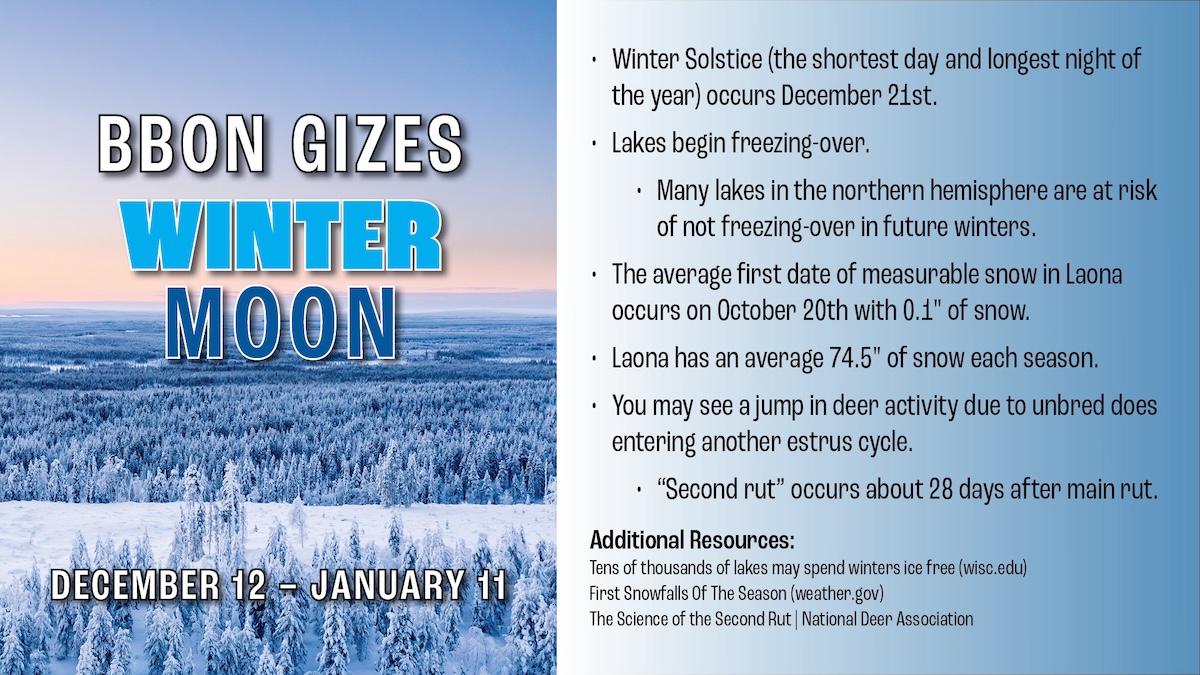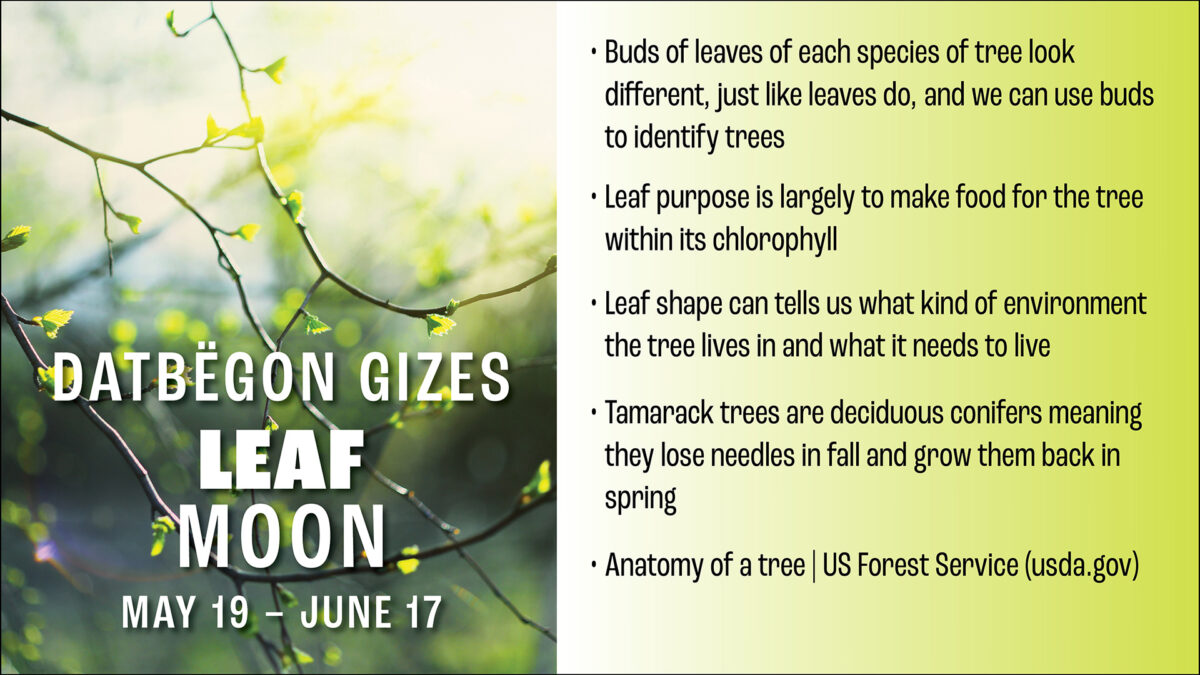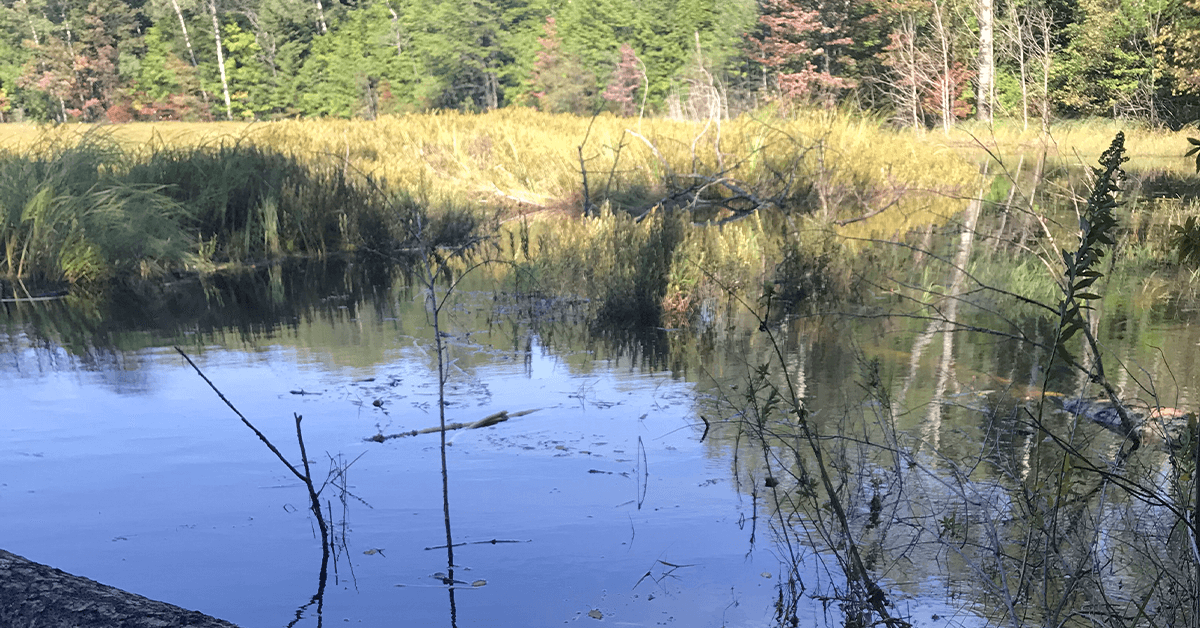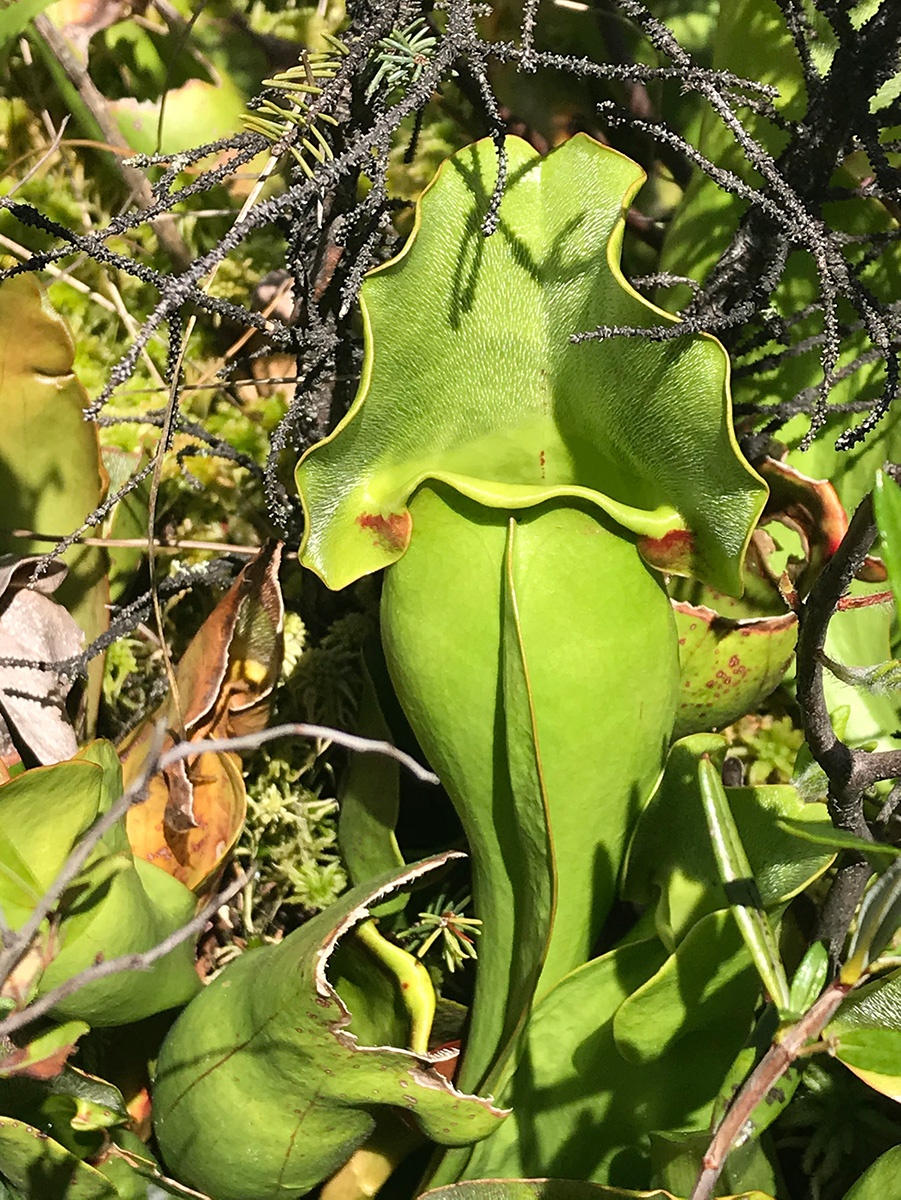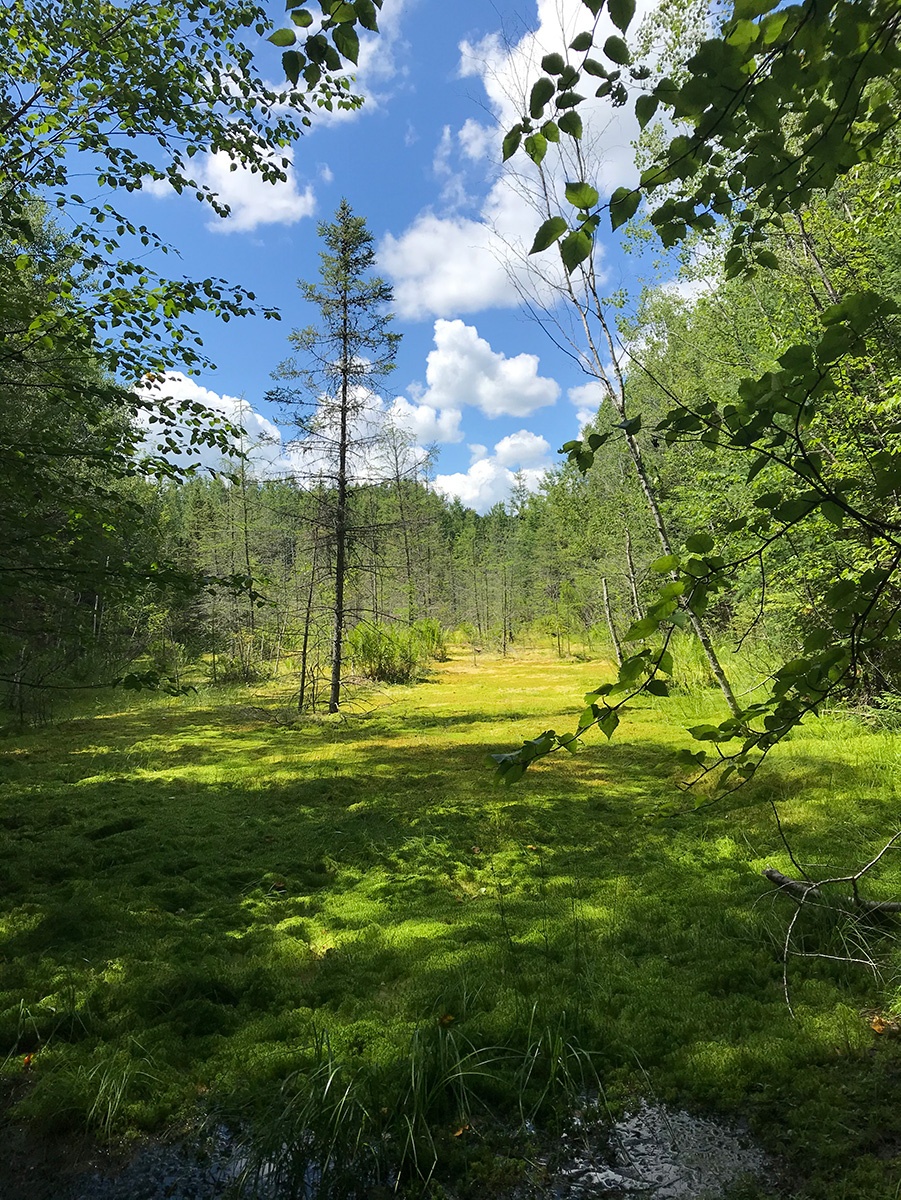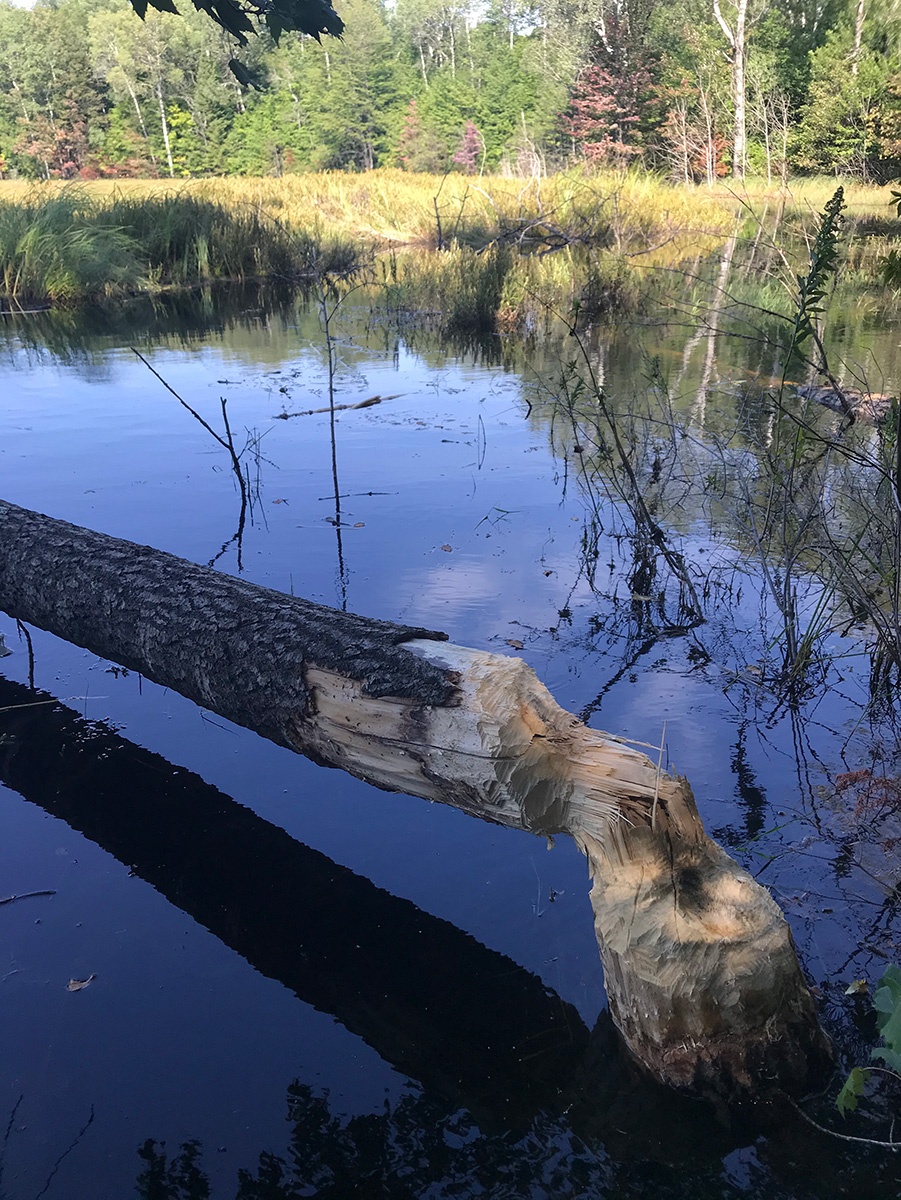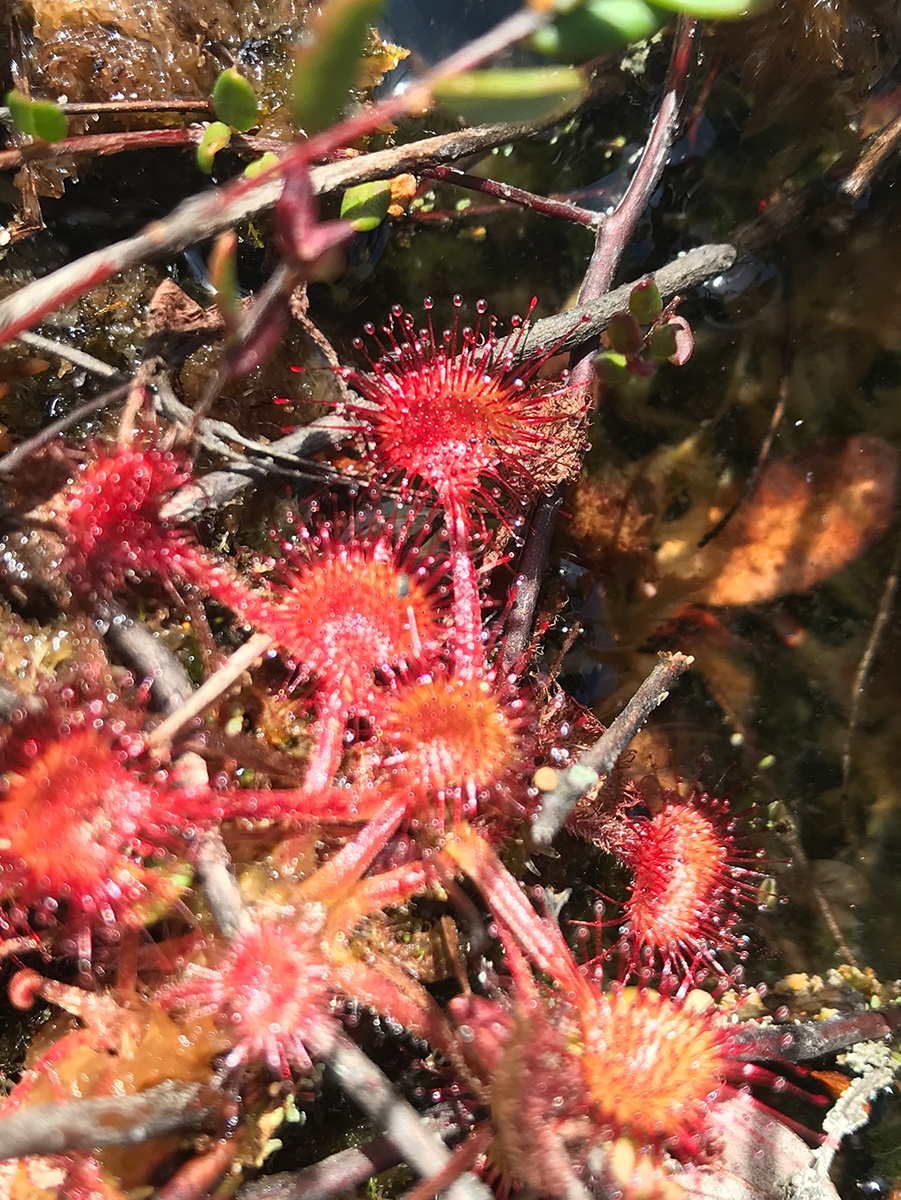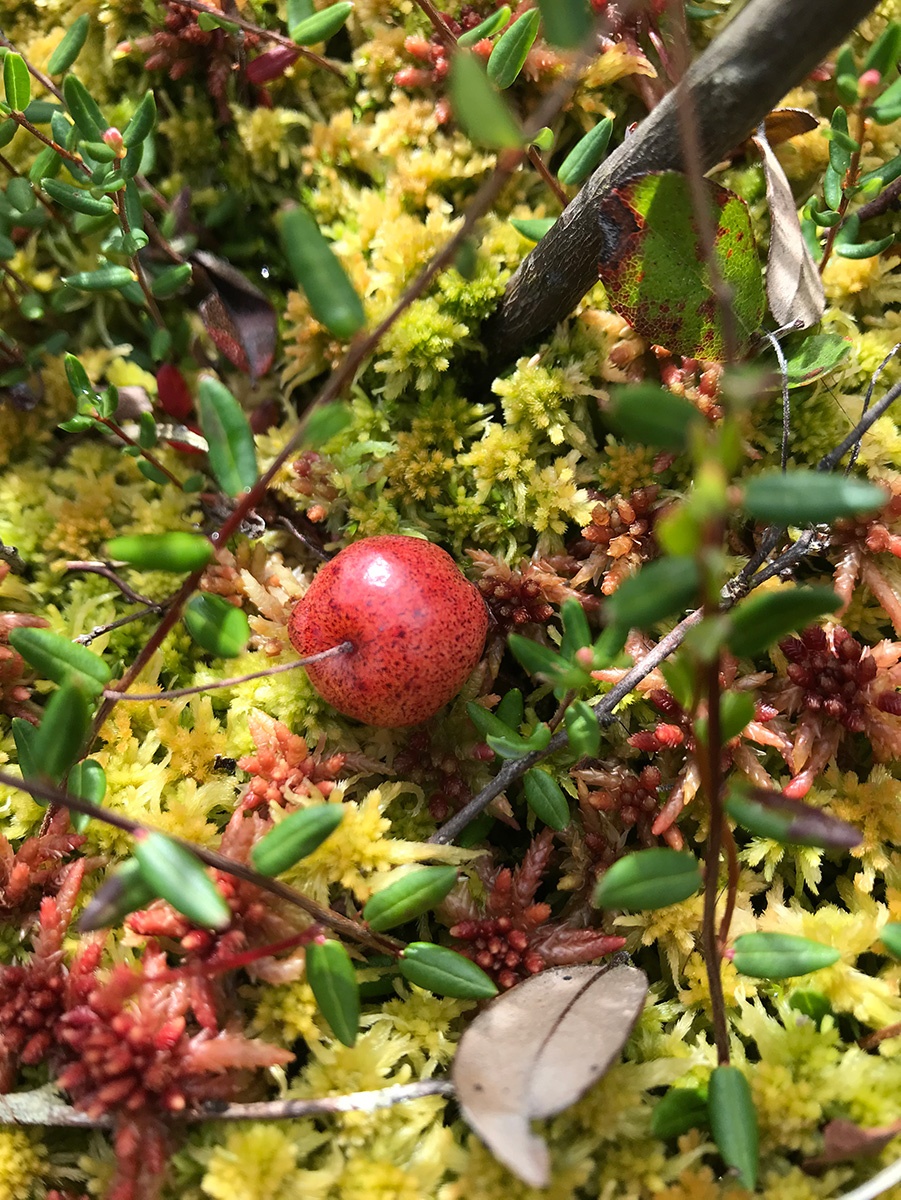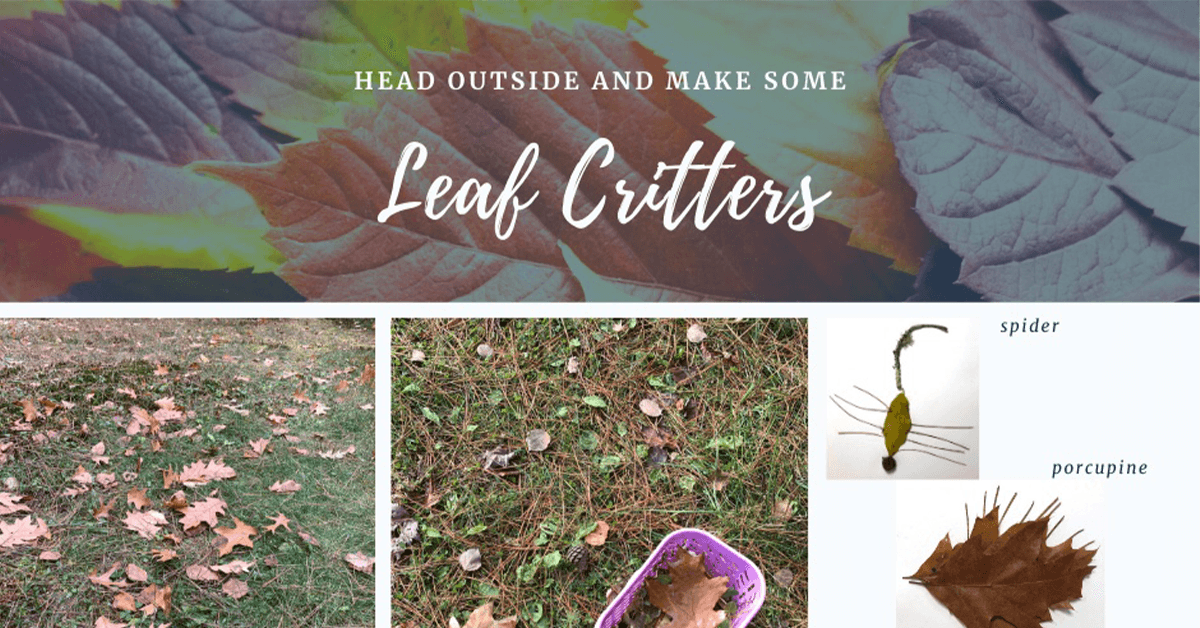- Winter Solstice the shortest day and longest night of the year) occurs December 21st.
- Lakes begin freezing-over.
- Many lakes in the northern hemisphere are at risk of not freezing-over in future winters.
- The average first date of measurable snow in Laona occurs on October 20th with 0.1″ of snow.
- Laona has an average 74.5″ of snow each season.
- You may see a jump in deer activity due to unbred does entering another estrus cycle.
- ”Second rut” occurs about 28 days after main rut.
Surviving Bogs
You may recall memories from your childhood of walking on a carpet of sphagnum moss, the ground beneath you waving back and forth as you walk as if balancing on a waterbed. What you may not have known at the time is that you were walking on a bog. Bogs are wetlands that have a heavy layer of sphagnum moss carpeting the ground. This thick moss can often restrict the bog from access to nutrient-rich groundwater.
Because of the lack of flowing water and nutrient input, bogs differ from other wetlands around our area. They have low nutrient levels, limited available oxygen, and high acidity. These variables may sound scary from an ecological standpoint. In reality, this environment provides habitat for some really fascinating plant and wildlife species that are adapted to thrive in these harsh conditions.
The low levels of oxygen in these bog systems combined with cold temperatures makes it difficult for fungi and bacteria to break down dead plants. This subsequent buildup of plant matter assists in the accumulation of multiple years of peat moss, often forming rolling hummocks and hollow waterlogged depressions throughout the wetland.
This moss can absorb 20 times its dry weight in water, which helps soak up water during heavy rains and retain moisture to be used by plants and wildlife throughout the drier summer months. This characteristic is also what contributes to the “waterbed” feeling while walking on it.
The plants you are likely to encounter in bogs are rarely seen anywhere else. These plants often have adaptations that allow them to survive in a stressful environment, such as evergreen leaves that are often waxy or hairy with downward-turned leaf edges that allow the plants to retain moisture and photosynthesize longer than other species. Some species grow deep rhizomes that extend 12 inches or more below ground toward the water table which allows the plant to spread and stabilizes the sphagnum mat for inhabitance by other species.
Another adaptation some unique plants exhibit is the ability to catch and digest insects to assist with nutrient intake. In northern Wisconsin, these carnivorous plants may include pitcher plants, sundews, and bladderworts that can lure, capture, and digest insects to obtain the nutrients lacking in their environment. Other plants often seen in bogs include leatherleaf, labrador tea, creeping snowberry, small-leaved cranberry, velvet-leaved blueberry, bog rosemary, and stunted tamaracks and black spruces amongst various species of sedges and rushes.
Bogs are also utilized for habitat and food by numerous wildlife species. The dense characteristics of leatherleaf and other woody shrubs provide cover for nesting mallards and ruffed grouse while being browsed by snowshoe hares, white-tailed deer, and even moose in northern areas.
Turtles, amphibians, birds, muskrats and beavers are other animals that may utilize bogs at some point throughout their life cycles. Due to their lack of flowing water and low oxygen levels, you often don’t find fish in bogs, which allows amphibians to breed successfully in these habitats.
While all of this information is fascinating, the most mysterious and intriguing aspect of all is the preservation ability of bogs. The combination of low oxygen levels, cold temperatures, high acidity, and anti-microbial properties of peat moss not only make it difficult for bacteria to decompose plant matter, but it also creates the ideal environment for preservation of anything that happens to perish within bogs.
Around the world, corpses of animals and people (the oldest from nearly 4,000 years ago) have been found extraordinarily well preserved, often with discernible facial features, fingerprints, hair or fur, and even stomach contents. Spooky! Well don’t let the potential for unknowingly walking above mummified corpses deter you from enjoying bogs in the summer. They are teeming with life and beauty and provide the perfect allure to keep you coming back for more!
Chillin in the Lodge with Muk (Beaver)
Beavers mainly live in their lodge during winter, leaving only to get limbs that are stuck into the mud beneath their lodge at the bottom of the lake or pond. The wood was placed there by the beavers before winter, so they have a supply of sticks to eat and chew on during winter.
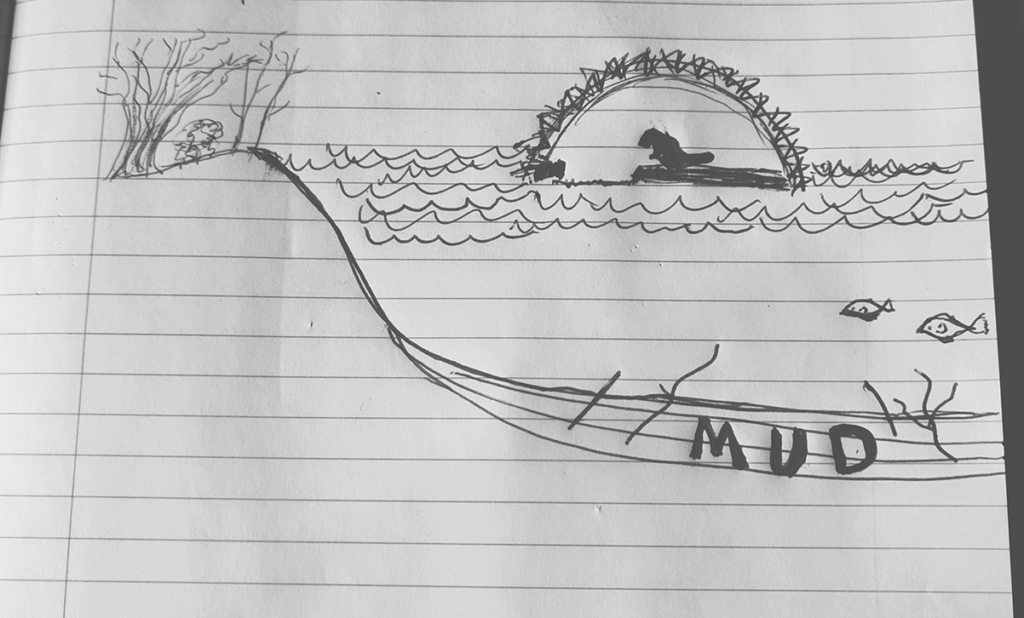
This activity is pretend play—beavers in winter.
You can watch these two videos of beavers before you play to help get into character:
Now you’re ready to play!
First, build a lodge. The entrance should be at the bottom. Beavers swim into their lodge from under the water.
Lodge can be make like an indoor fort with blankets/sheets, pillows, chairs, etc.
Next, dress like a beaver.
Teeth can be made from colored paper and should be a rusty orange color. Beaver teeth contain iron, which makes the teeth strong enough to chew on wood. Feet can be made from paper or by putting flip flops into socks. If using paper, trace an adult’s foot or shoe and cut out. Use tape to attach the paper feet. Beavers have very large back feet to help them swim.
Tail can be made from a towel, scarf, paper—get creative!
Lastly, prepare “sticks” for eating and gnawing. Decide where your lake “bottom” will be and put the sticks there.
Sticks can be made from rolled up paper, empty paper towel rolls, markers, or other stick-like items around the house—use caution if you use something pointy like pencils or real sticks to make sure no one gets poked and hurt.
Now it’s time to play! “Swim” into your lodge and hang out, take a nap, clean your fur. Any sticks you already have in your lodge can be gnawed on and the bark eaten (for pre-tend). It’s important not to let your teeth grow too long, so chew on lots of sticks. When you run out, swim out of your lodge down to the bottom of the lake to your “beaver re-frigerator,” pick up some sticks there, and bring them back to your lodge.
What did you like most about being a beaver?
What was hard?
Do you think they get bored in winter? What do you think they do when they get bored?
Leaf Critters
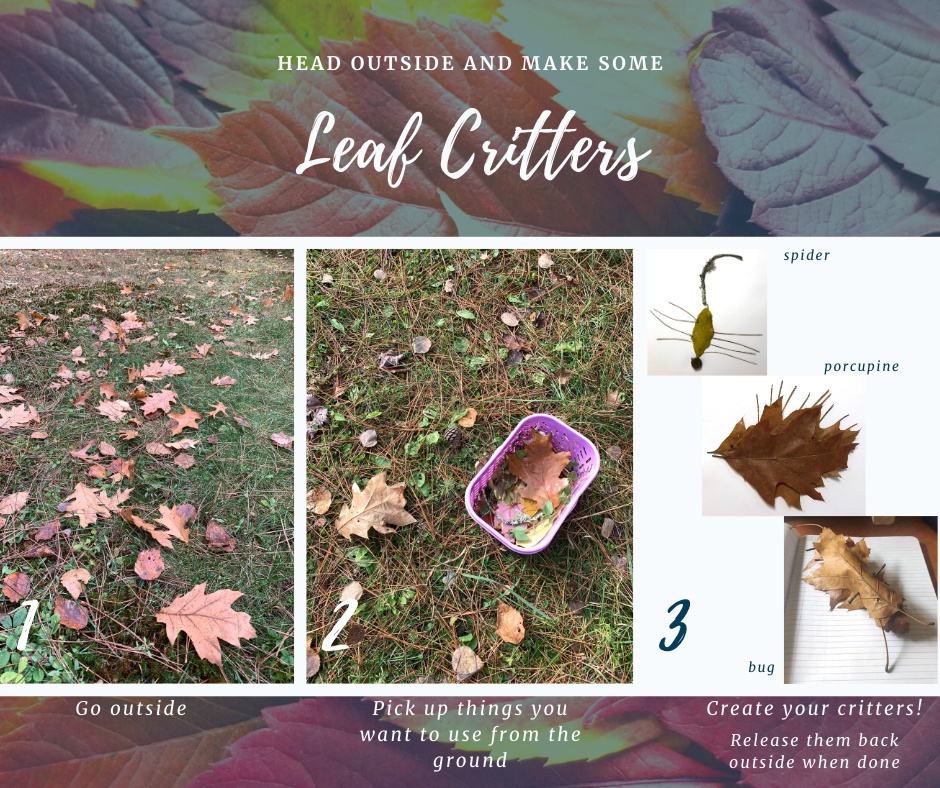
Head outside with your loved ones for this activity before the leaves get covered with snow! As you make them, describe the critter you’re making and what it’s doing.


